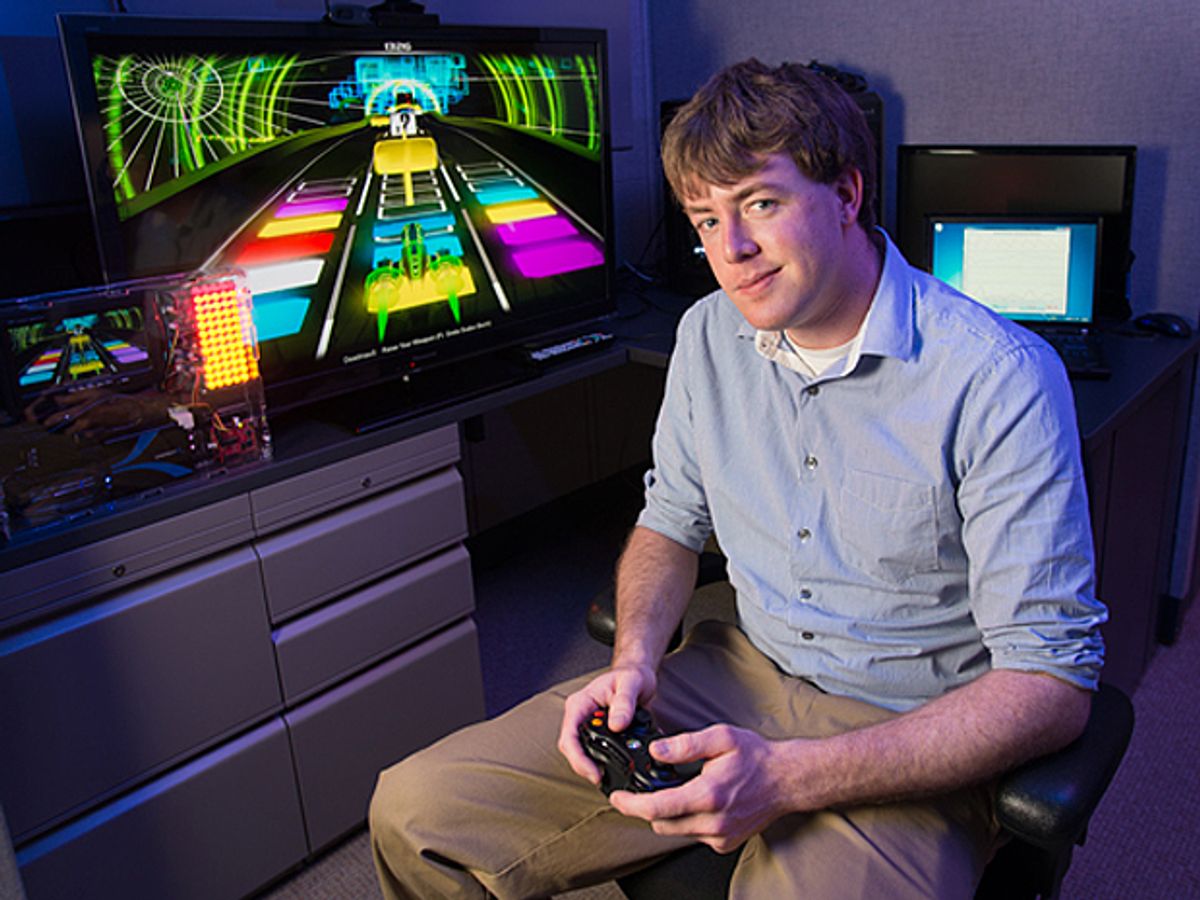Video games capable of detecting player boredom could someday ratchet up the excitement by sending in a new wave of virtual zombies or triggering an on-screen ambush by enemy soldiers. That intriguing possibility comes from Stanford University's experimentation with a video game controller that can detect a gamer's heart rate, blood flow, breathing rate, and other physiological signs.
Such signs provide an indirect measurement of emotional arousal as regulated by the human body's autonomic nervous system, the Stanford researchers say. They modified an Xbox 360 controller by adding a host of sensors to capture the physiological data from a player. It's a first step toward eventually developing games that can actively respond to players' engagement by either turning up or turning down the on-screen action.
"If a player wants maximum engagement and excitement, we can measure when they are getting bored and, for example, introduce more zombies into the level," said Corey McCall, a doctoral candidate in electrical engineering at Stanford University, in a press release. "We can also control the game for children. If parents are concerned that their children are getting too wrapped up in the game, we can tone it down or remind them that it's time for a healthy break."
The modified Xbox controllers have a 3-D printed plastic module containing the sensors on the backside. Metal pads on the controller's hand grips gauge heart rate, blood flow, rate of breath, and how deeply gamers are breathing. A light sensor adds a second way to collect heart rate data. And accelerometers provide yet another measurement of emotional arousal by detecting how much the controller is being shaken.
The Stanford group used a custom-built racing game to see whether their controller could collect data on players' mental engagement with games. Their next step will be to use the collected feedback to modify the gameplay on the fly.
This isn't the first effort to combine biosensor feedback with video games in some way. Some devices such as Neurosky and Emotiv use electroencephalography (EEG) to allow users to crudely control games using brainwaves. The Myo armband uses muscle signals to let users control robots and other devices. Plessey Semiconductors, in England developed a system to detect electric fields from a person's body that could eventually power a hands-free gaming controller similar to Microsoft's Kinect technology.
But the concept behind Stanford's project of using biosensor feedback to gauge player excitement—and actively tailoring gameplay in real time—may represent an even more interesting approach than using our bodies as game controllers. Sophisticated games might end up using the idea to build tension and spring timely surprises upon players, whether the latter are fighting off ambushes in virtual urban battlefields or dreading what might lurk around the corner in a horror game. Having biosensors built into existing gaming hardware could also prove an advantage over requiring people to purchase additional headsets or sensors as gaming accessories.
And even if biosensor-equipped controllers don't become mainstream products, they could help game developers collect more feedback on how players experience their games in the early testing stages. A similar idea by researchers at the Institute of Information Science, Academia Sinica, in Taipei, and National Taiwan University, uses electrodes attached to gamer's faces to detect smiles and frowns while collecting data on player engagement in fairly controlled lab settings. A modified game controller could provide a more natural way to collect such data from gamers.
Jeremy Hsu has been working as a science and technology journalist in New York City since 2008. He has written on subjects as diverse as supercomputing and wearable electronics for IEEE Spectrum. When he’s not trying to wrap his head around the latest quantum computing news for Spectrum, he also contributes to a variety of publications such as Scientific American, Discover, Popular Science, and others. He is a graduate of New York University’s Science, Health & Environmental Reporting Program.



